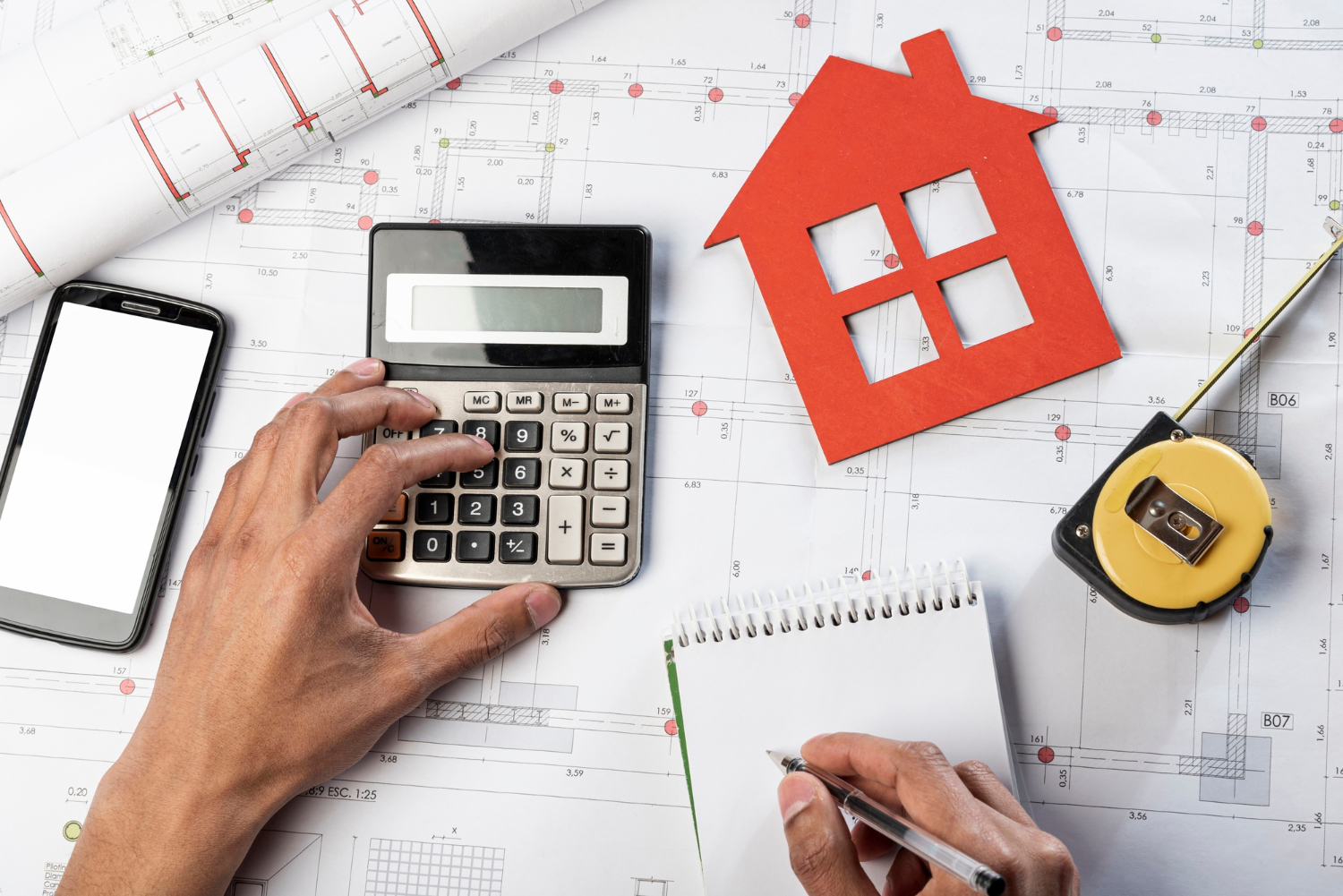New Home Construction Electrical Checklist: A Comprehensive Guide to Safe and Efficient Wiring
 Written ByMaor Greenberg
Written ByMaor Greenberg- Updated On
- InConstruction

Overview of the Importance of Electrical Planning in New Home Construction
Building a new home is an exciting venture, but it requires meticulous planning, especially when it comes to electrical systems. Proper electrical planning ensures safety, efficiency, and adherence to local regulations. It’s not just about lighting and powering appliances; it’s about creating a harmonious living environment that caters to modern needs.
The Purpose of an Electrical Checklist
An electrical checklist serves as a roadmap for both homeowners and contractors. It helps in identifying the electrical requirements, planning the layout, and ensuring that all safety standards are met. Without a checklist, you may overlook critical aspects that could lead to future problems.
Brief Introduction to Electrical Safety Standards
Electrical safety standards are guidelines set by authorities to ensure the safe installation and operation of electrical systems. These standards are crucial in preventing accidents and ensuring that the electrical system functions efficiently. Adhering to these standards is not just a legal requirement but a moral responsibility to safeguard lives and property.
Pre-Construction Planning
Understanding Local Building Codes and Regulations
Local building codes and regulations vary by region, and understanding them is vital for compliance. These codes dictate the minimum requirements for electrical systems, including wiring methods, materials, and safety measures. Consulting with local authorities or a professional electrician can provide clarity on these regulations.
Selecting the Right Electrical Contractor
Choosing the right electrical contractor is paramount for the success of your project. Look for licensed, experienced professionals who have a solid understanding of local codes and regulations. Ask for references, check online reviews, and ensure they have the necessary insurance and certifications.
Determining Electrical Load and Capacity Needs
Calculating the electrical load and capacity needs is a critical step in planning. It involves assessing the power requirements of all electrical devices and appliances that will be used in the home. This calculation ensures that the electrical system can handle the demand without overloading.
Planning for Future Electrical Needs
Future-proofing your electrical system is wise. Consider potential additions like electric car chargers, home automation, or solar panels. Planning for these future needs during the initial construction phase can save time and money later on.
Wiring and Electrical Components
Types of Wiring: Pros and Cons
There are various types of wiring, each with its pros and cons. For example, copper wiring is known for its durability but is more expensive, while aluminum wiring is more affordable but less resilient. Understanding these differences helps in selecting the right wiring for your needs.
Choosing the Right Electrical Boxes and Panels
Electrical boxes and panels are the heart of your electrical system. Selecting the right ones ensures safety and efficiency. Consider factors like the number of circuits, future expansion, and compliance with local codes when making your choice.
Planning for Outlets, Switches, and Fixtures
Strategically placing outlets, switches, and fixtures enhances convenience and aesthetics. Consider the functionality of each room and plan accordingly. For example, kitchen and bathroom areas may require special considerations due to moisture and appliance needs.
Special Considerations for Kitchen and Bathroom Wiring
Kitchens and bathrooms have unique electrical requirements. They often need GFCI outlets to prevent shocks, and special care must be taken to keep outlets away from water sources. Planning for these special considerations ensures safety and functionality.
Safety Considerations
Grounding and Circuit Protection
Grounding provides a safe path for electrical faults, reducing the risk of electric shock. Circuit protection, through circuit breakers or fuses, prevents overloading that can lead to fires. Both are essential for a safe electrical system.
GFCI and AFCI Requirements
Ground Fault Circuit Interrupters (GFCI) and Arc Fault Circuit Interrupters (AFCI) are devices that protect against shocks and fires. GFCI is essential in wet areas like bathrooms, while AFCI is used to prevent electrical fires. Installing these devices is a crucial safety measure.
Child Safety: Tamper-Resistant Receptacles
Tamper-resistant receptacles are designed to prevent children from inserting objects into outlets. They are now a standard requirement in many areas and are a small investment in ensuring child safety.
Emergency Systems: Smoke Detectors and Exit Signs
Smoke detectors and exit signs are vital for emergency preparedness. They provide early warning in case of fire and guide occupants to safety. Regular testing and maintenance are essential to keep them functional.
Energy Efficiency and Sustainability
Energy-Efficient Lighting Options
Energy-efficient lighting, such as LED bulbs, not only reduces electricity bills but also contributes to environmental sustainability. Consider implementing dimmers, timers, and motion sensors to further enhance efficiency.
Smart Home Technology and Automation
Smart home technology offers convenience and energy savings. From smart thermostats to automated lighting, these technologies allow for personalized control and can significantly reduce energy consumption.
Solar Power Integration
Solar power is a renewable energy source that can be integrated into your home’s electrical system. It reduces reliance on the grid, lowers energy bills, and contributes to a greener environment.
Tips for Reducing Electrical Consumption
Simple tips like unplugging devices when not in use, using energy-efficient appliances, and optimizing heating and cooling systems can make a significant difference in reducing electrical consumption.
Inspections and Compliance
Preparing for Local Authority Inspections
Local authority inspections ensure that the electrical system complies with all regulations. Preparing for these inspections involves reviewing all installations, checking for compliance, and making necessary adjustments.
Common Electrical Inspection Pitfalls
Common pitfalls during inspections include improper grounding, incorrect wire sizes, and lack of GFCI protection. Being aware of these can help in avoiding delays and additional costs.
Ensuring Compliance with National Electrical Code (NEC)
The National Electrical Code (NEC) sets the standards for electrical safety. Ensuring compliance is not only a legal requirement but also a commitment to quality and safety.
Final Inspection and Certificate of Occupancy
The final inspection is the last step before receiving a certificate of occupancy. It verifies that all work has been done according to code, and the home is safe for habitation.
Maintenance and Future Upgrades
Routine Electrical Maintenance Tips
Regular maintenance, such as checking for loose connections, testing GFCI outlets, and inspecting circuit breakers, ensures the longevity and safety of your electrical system.
Planning for Future Renovations and Additions
If you plan to expand or renovate in the future, consider this during the initial planning phase. It can save time and money later on and ensures that the electrical system can accommodate new additions.
When to Call a Professional Electrician
Recognizing when to call a professional electrician is vital. If you notice flickering lights, frequent circuit breaker trips, or any unusual electrical behavior, it’s time to call an expert.
Warranty and Support from Electrical Contractors
Understanding the warranty and support provided by your electrical contractor can provide peace of mind. Ensure that all agreements are documented and that you know who to contact for future support.
Conclusion
Recap of Key Points
Building a new home is an exciting but complex process. Proper electrical planning, adherence to safety standards, and consideration for future needs are essential. This comprehensive guide provides a roadmap to ensure a safe and efficient electrical system.
Encouragement to Follow the Checklist for a Safe and Efficient Electrical System
Following this checklist will not only ensure compliance with all regulations but also create a comfortable, energy-efficient living environment. It’s an investment in safety, convenience, and sustainability.
Resources and Contacts for Further Assistance
For further assistance, consult local inspection authorities, electrical contractors, and online resources. Books and online courses on home electrical planning can also provide valuable insights.
Additional Resources
Frequently Asked Questions
Common mistakes include overloading circuits, improper grounding, using incorrect wire sizes, and not planning for future needs. These can lead to safety hazards and inefficiencies.
Utilizing energy-efficient appliances, LED lighting, smart home technology, and solar power can contribute to an energy-efficient electrical system.
Look for licensed, insured, and experienced contractors with positive reviews and references. Ensure they understand local codes and regulations.
Regular inspections should be conducted by a professional electrician, especially after major renovations or additions. Annual check-ups are also recommended.
Smart home automation, solar power integration, energy-efficient lighting, and electric vehicle charging stations are some of the latest trends in home electrical technology.

Maor Greenberg
Maor Greenberg, with over 15 years in real estate, construction, and architectural design, founded the Greenberg Group, Inc. in 2019, fostering a network of companies including Greenberg Development, Greenberg Construction, Greenberg Design Gallery, and VRchitects. His visionary leadership aims to revolutionize the industry by offering comprehensive solutions and streamlined services for consumers' home improvement and construction needs.



